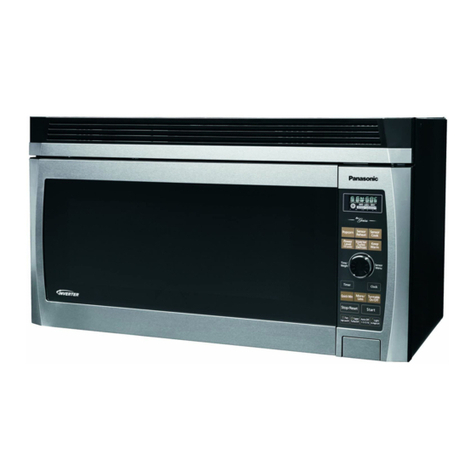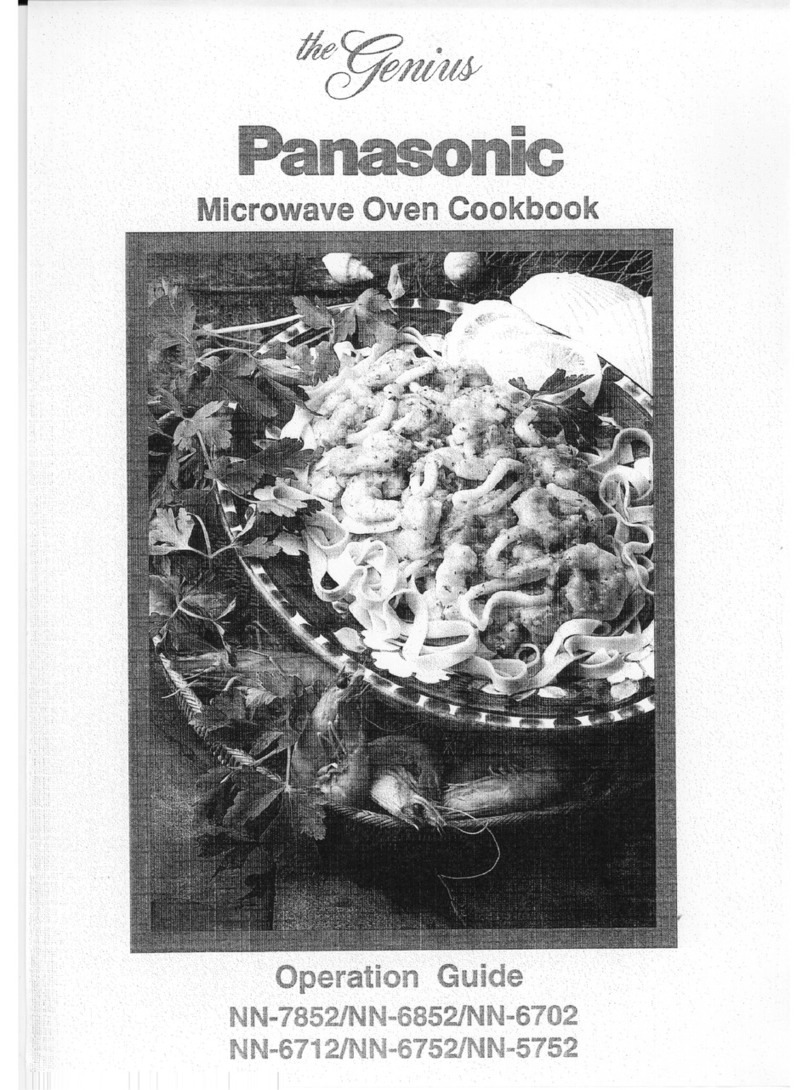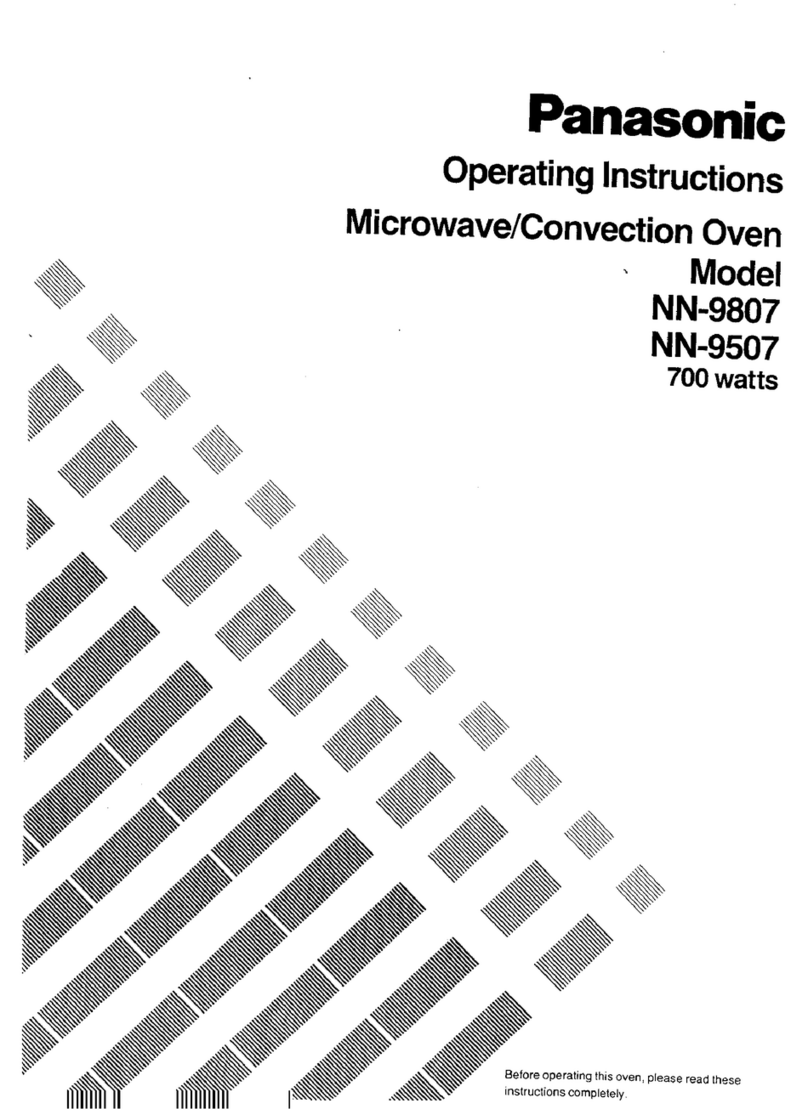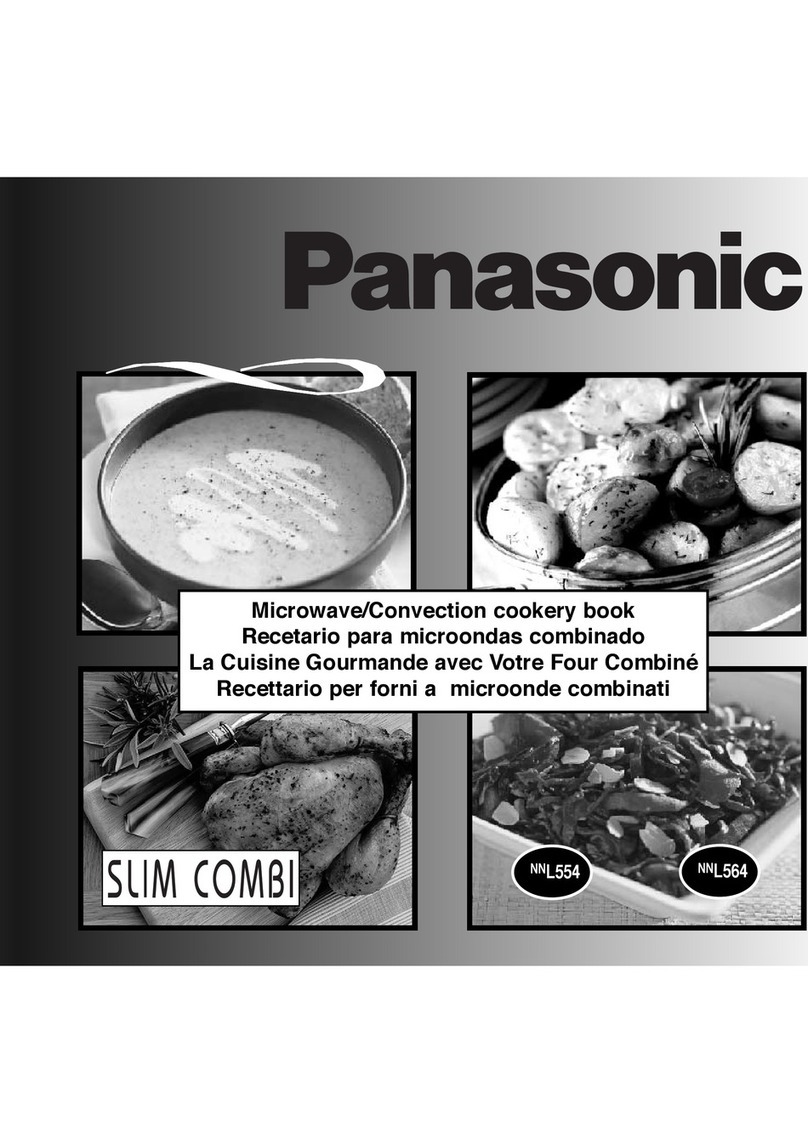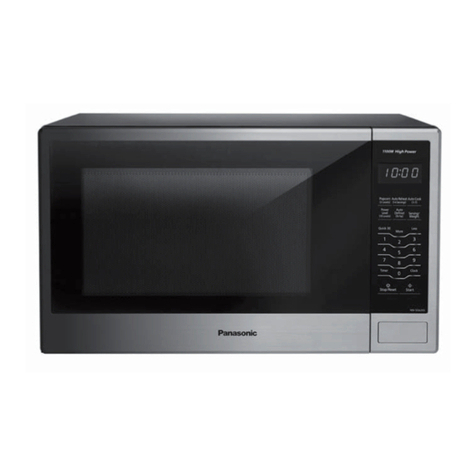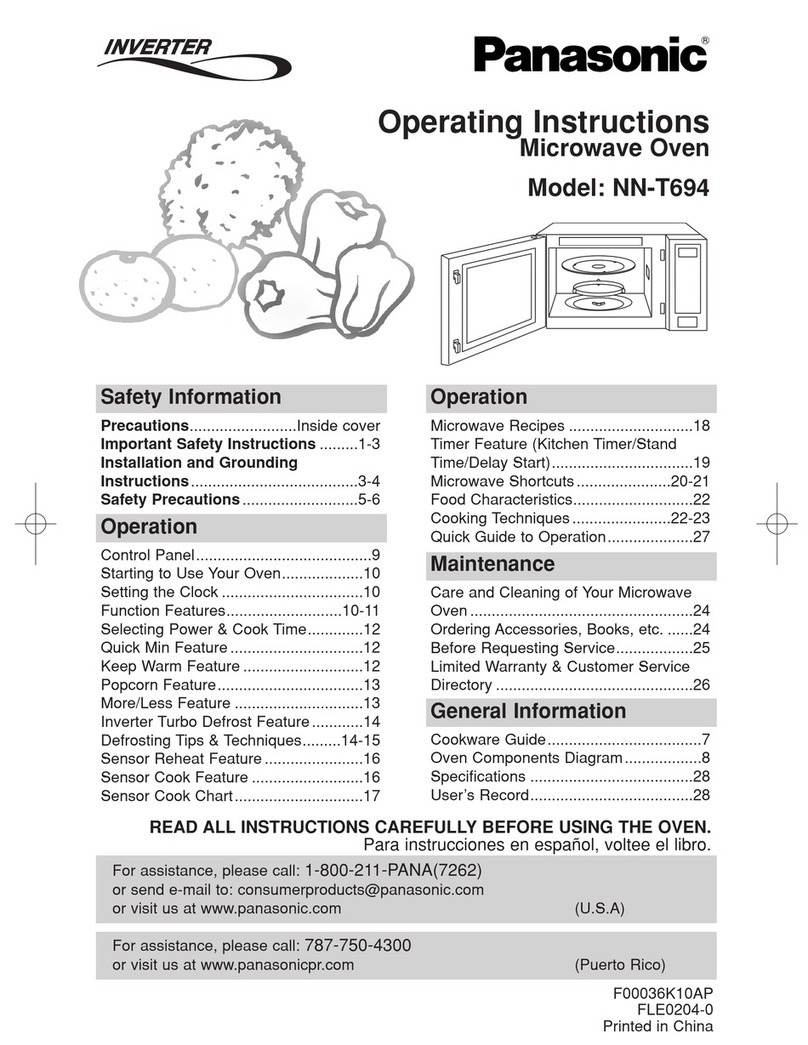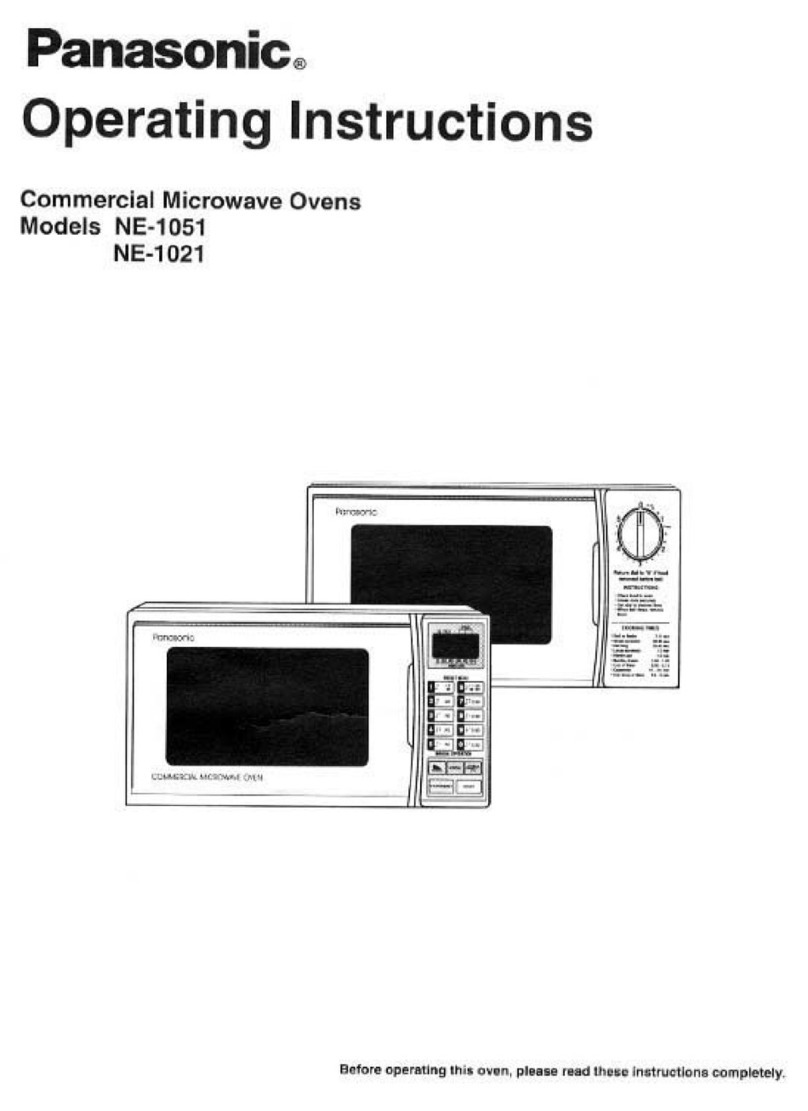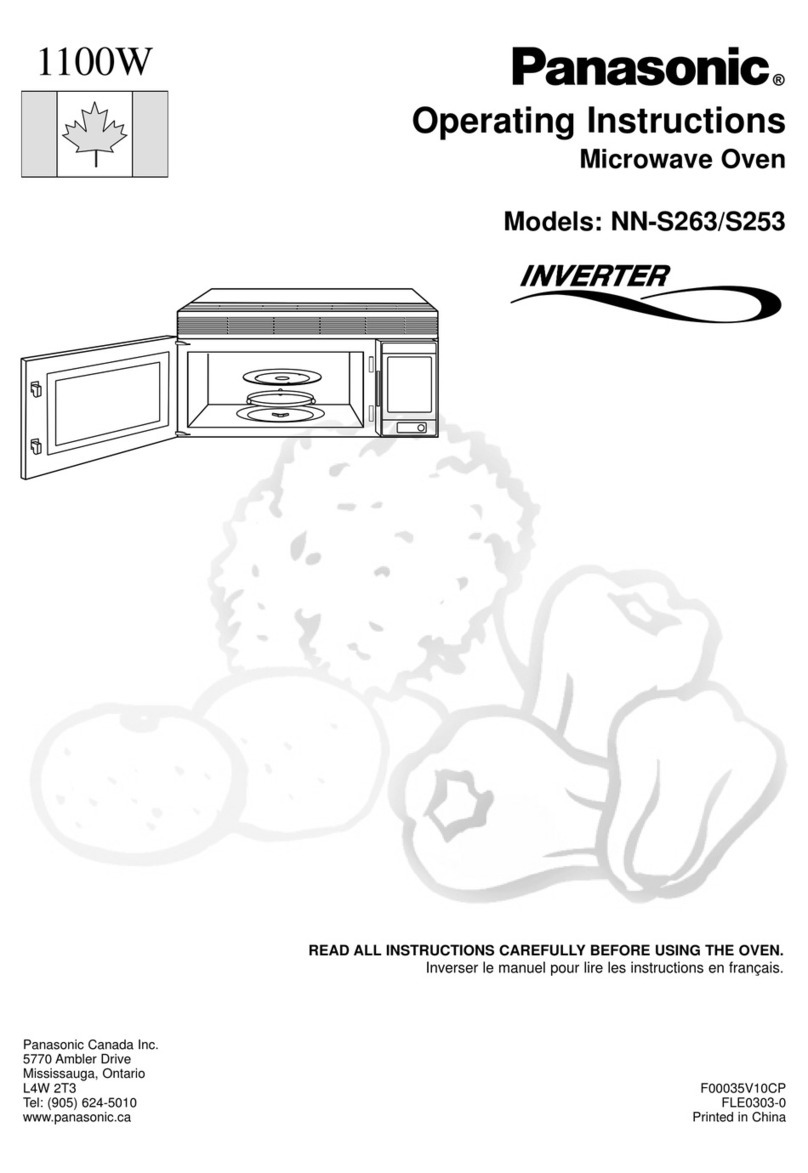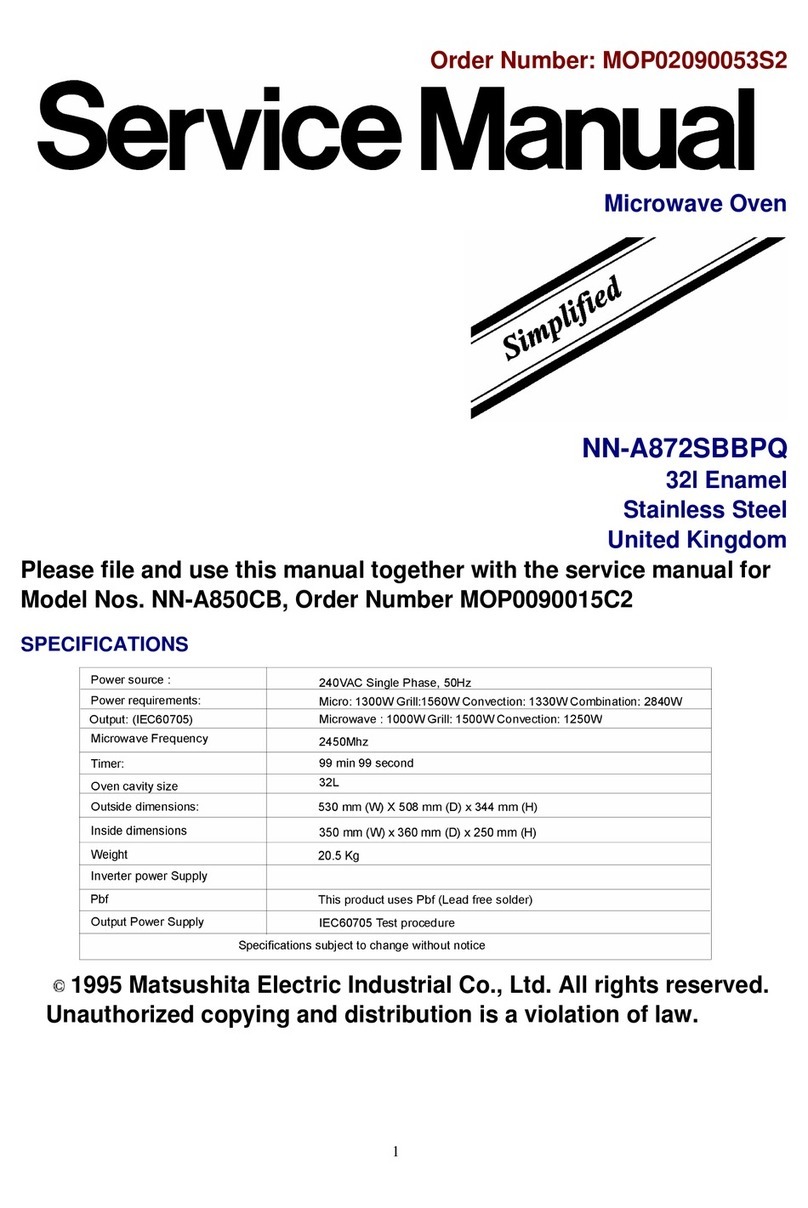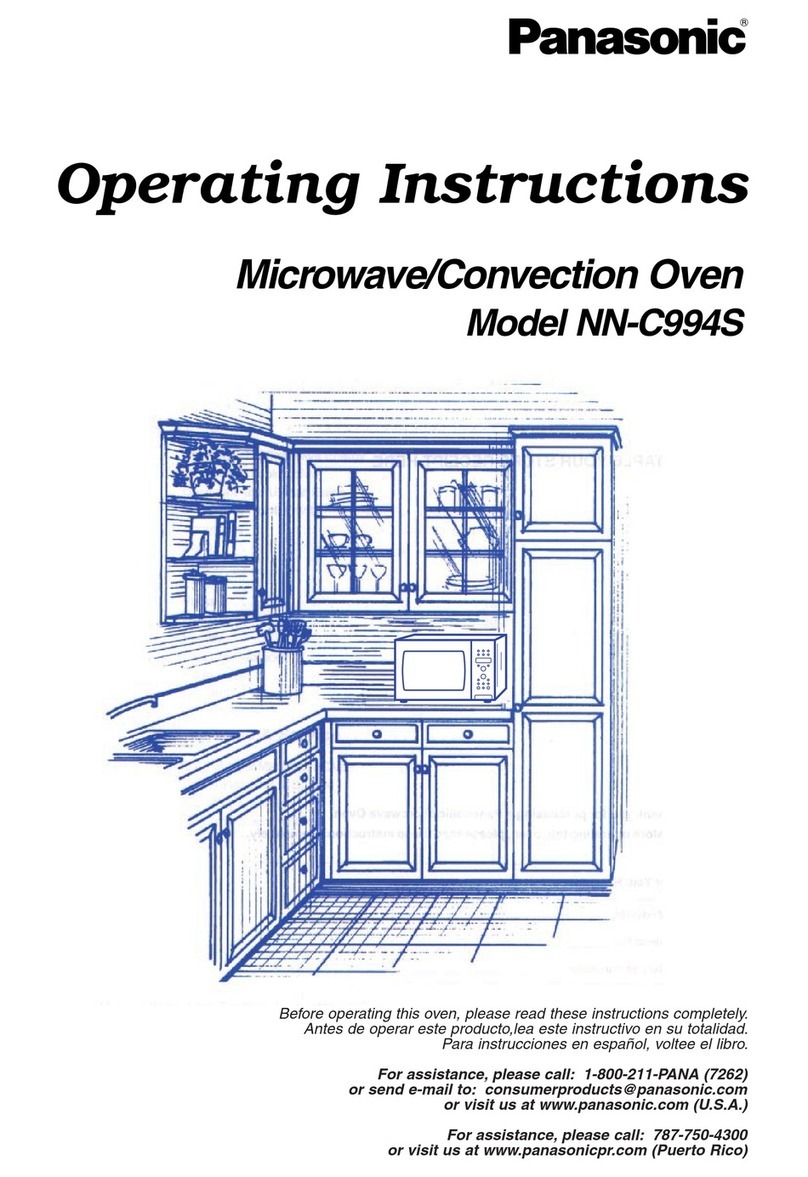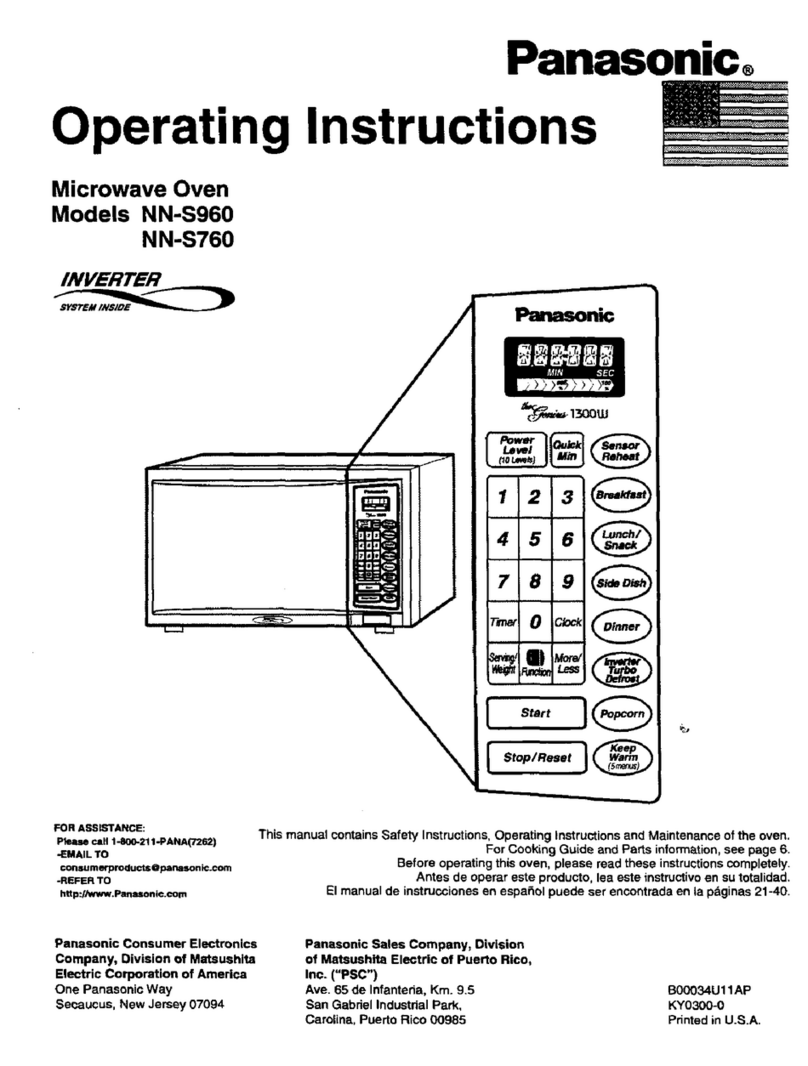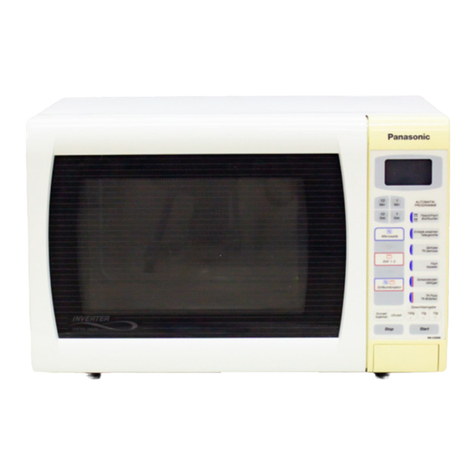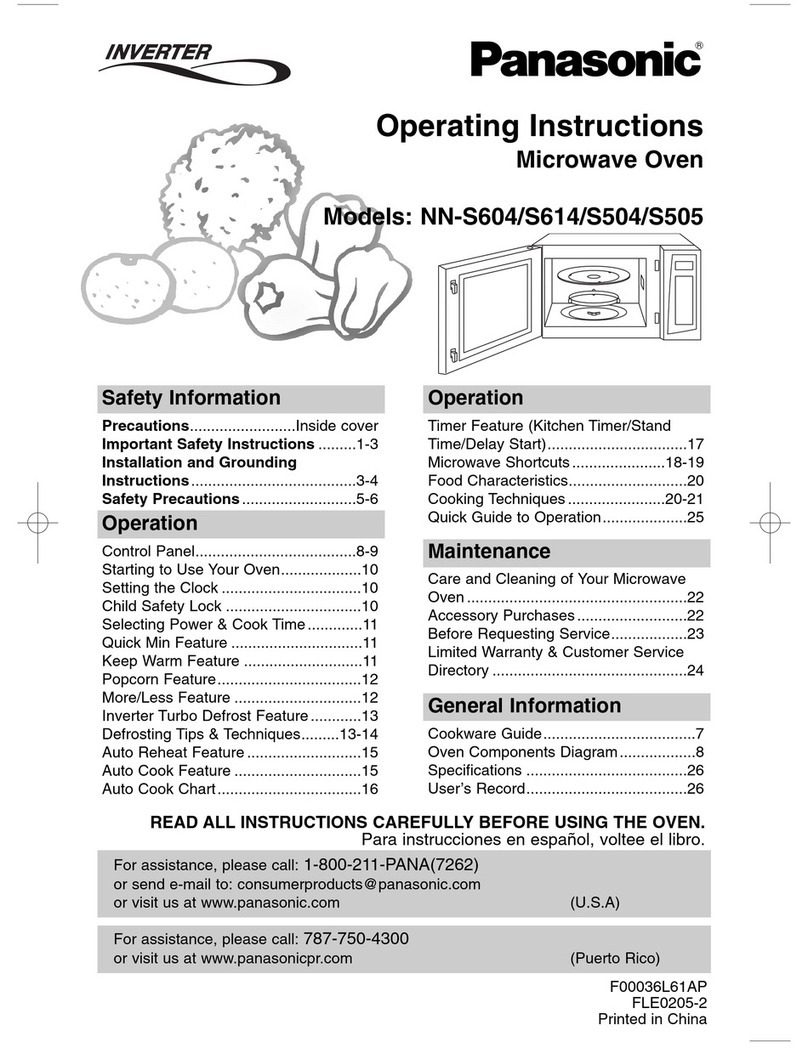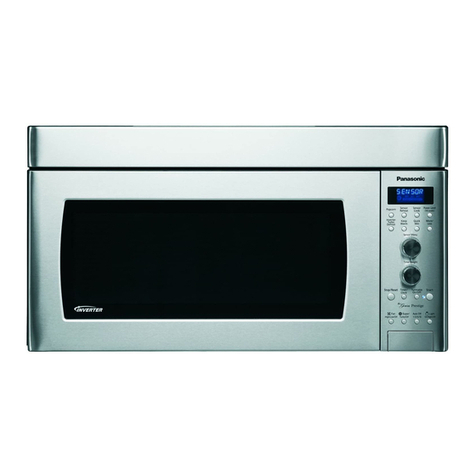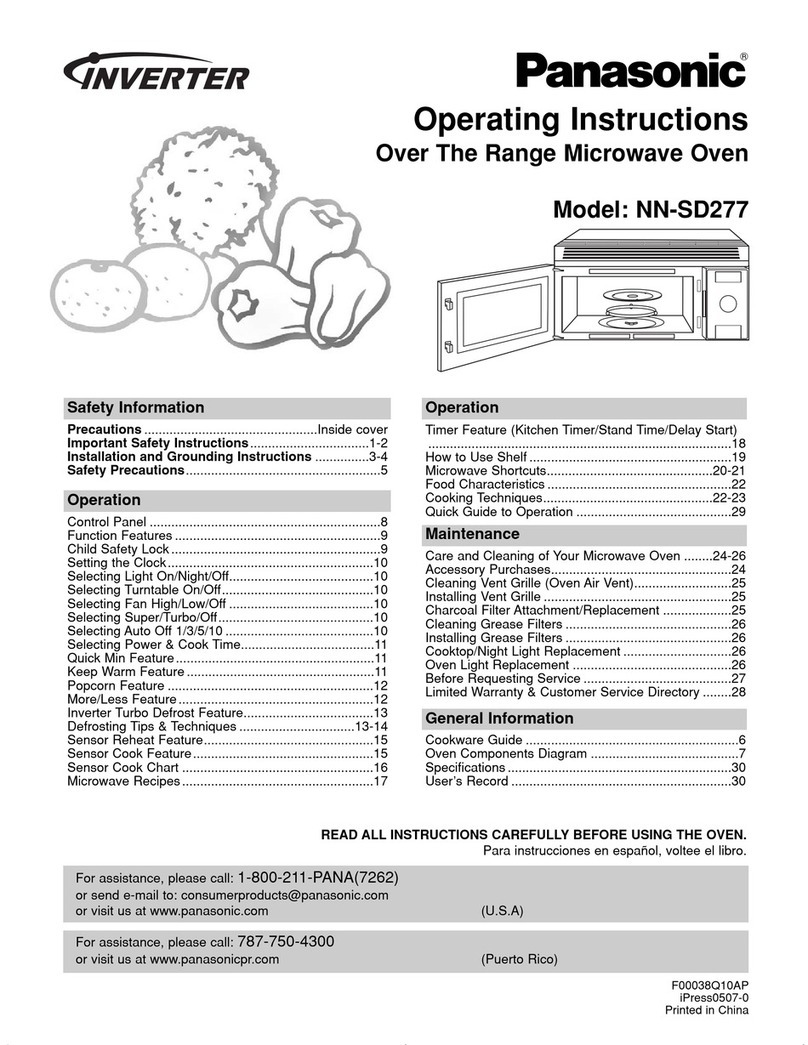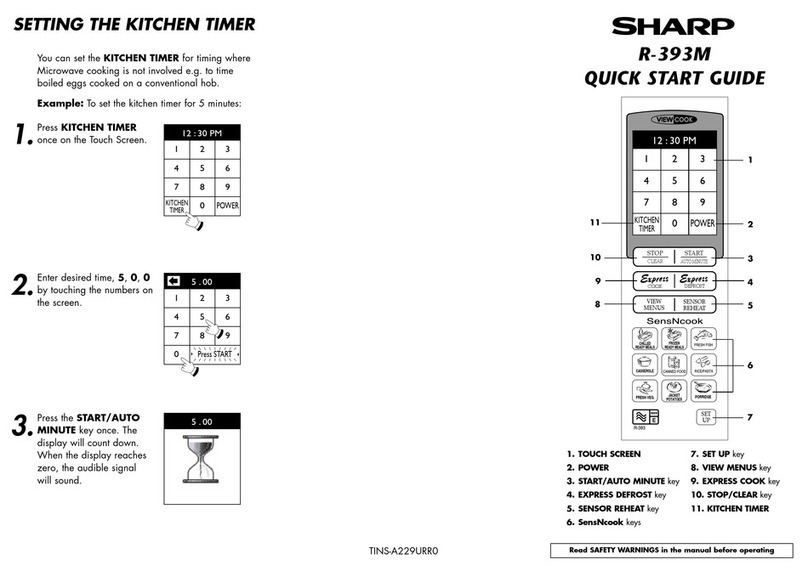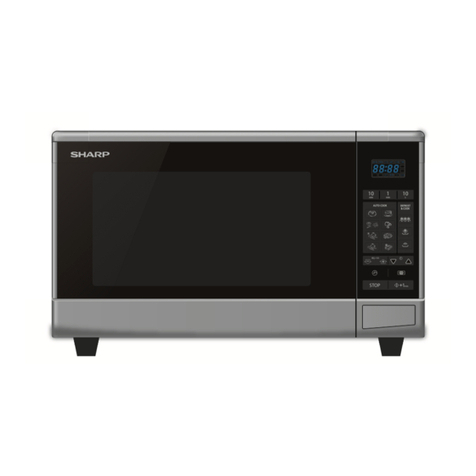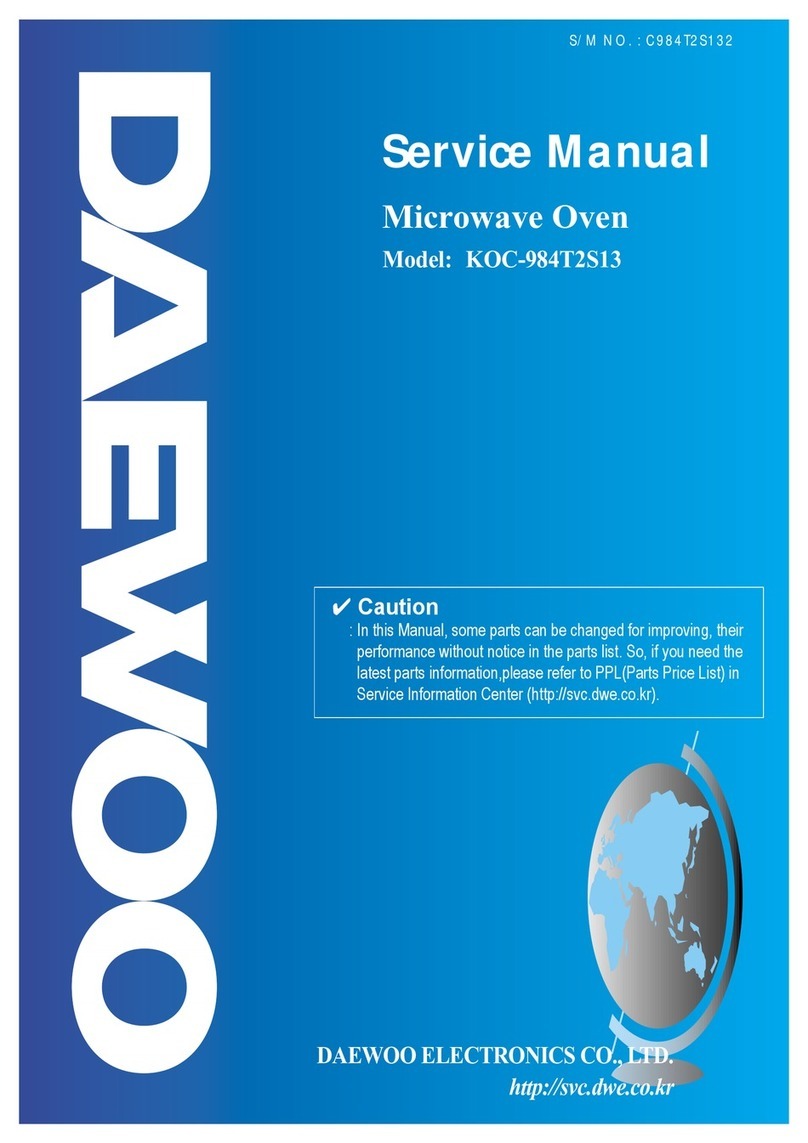
core
phat
NIN-8508,
NN-8558
NN-8808,
NN-8858
NN-8808P
This
service
manual
covers
products
for
following
markets.
When
troubleshooting
or
replacing
parts,
please
refer
to
the
country
identifications
shown
below
for
your
applicable
‘product
specification.
Me
For
U.S.A.
and
some
of
Latin
America
countries
--For
Canada
fe
Ap
;
WARNING
4.
This
product
should
be
serviced
only
by
trained
qualified
personnel.
2.
Though
this
product
has
been
manufactured
in
compliance
with:
“Federal
Performance
Standard
21
CFR
Subchapter
J”
(D.H.H.S.):
U.S.A.
models
or
“Radiation
Emitting
Devices
Act’
(NHW):
Canadian
models
it
is
very
important
all
repairs
should
be
made
in
accordance
with
procedures
described
in
this
manual
to
avoid
being
exposed
to
excessive
microwave
radiation.
;
3.
Check
for
radiation
leakage
after
every
servicing
according
to
the
“procedure
for
measuring
radiation
leakage”
on
page
24.
4.
Any
serviceman
who
learns
of
any
accident
pertaining
to
microwave
radiation
leakage
should
immediately
notify
the
appropriate
address
listed
below.
IN
U.S.A.
Matsushita
Services
Company
IN
PUERTO
RICO
PSC
(MSC)
50
Meadowland
Park
way,
(PSC)
Ave.
65
De
Infanteria,
KM
9.7
Secaucus,
New
Jersey
07094
Victoria
Industrial
Park
Attention:
Engineering
Support
Division.
Carolina,
Puerto
Rico
00630
(201)
348-7000
(809)
750-4300
IN
HAWAII
PHI
IN
CANADA
Matsushita
Electric
of
Canada
Limited
(PHI)
99-859
Iwaiwa
Street
(MELCA)
5770
Ambler
Drive,
Mississauga,
P.O.
Box 774
Honolulu,
Hawaii
96808-0774
Ontario,
L4W2T3
(808)
488-7779
(416)
624-5010
5.
There
are
special
components
used
in
the
microwave
oven
which
are
important
for
safety.
These
parts
are
marked
with
a
ZX
on
the
replacement
parts
list.
It
is
essential
that
these
critical
parts
should
be
replaced
with
manufacturer's
specified
parts
to
prevent
microwave
leakage,
shock,
fire,
or
other
hazards.
Do
not
modify
the
original
design.
PRECAUTIONS
TO
BE
OBSERVED
BEFORE
AND
DURING
SERVICING
TO
AVOID
POSSIBLE
EXPOSURE
TO
EXCESSIVE
MICROWAVE
ENERGY
(A)
Do
not
operate
or
allow
the
oven
to
be
operated
compartments,
check
the
magnetron,
waveguide
with
the
door
open.
or
transmission
line,
and
cavity
for
proper
align-
(B)
Make
the
following
safety
checks
on
all
ovens
to
ment,
integrity
and
connections.
ors
be
serviced
before
activating
the
magnetron
or
(D)
Any
defective
or
misadjusted
components
in
the
in-
other
microwave
source,
and
make
repairs
as
terlock,
monitor,
door
seal,
and
microwave
genera-
necessary:
:
tion
and
transmission
systems
shall
be
repaired,
re-
(1)
Interlock
operation
placed,
or
adjusted
by
procedures
described
in
(2)
Proper
door
closing
this
manual
before
the
oven
is
released
to
the
(3)
Seal
and
sealing
surfaces
(arcing,
wear,
and
owner.
other
damage)
(E)
A
microwave
leakage
check
to
verify
compliance
(4)
Damage
to
or
loosening
of
hinges
and
latches.
with
the
Federal
Performance
Standard
should
be
(5)
Evidence
of
dropping
or
abuse
performed
on
each
oven
prior
to
release
to
the
(C)
Before
turning
on
microwave
power
for
any
service
owner.
test
or
inspection
within
the
microwave
generating
CONTENTS
PRECAUTIONS
TO
BE
OBSERVED
BEFORE
AND
DURING
K
FACTORS
AND
POWER
LEVELS
vv
esstesssresetsreeieeeteisereees
mae
SERVICING
TO
AVOID
POSSIBLE
EXPOSURE
TO
CAUTIONS
TO
BE
OBSERVED
WHEN
TROUBLESHOOTING:-**-"+----
15
EXCESSIVE
MICROWAVE
ENERGY
*i-0s-rsescssstercsrestesreseeeteecenenecs
2
DISASSEMBLY
AND
PARTS
REPLACEMENT
PROCEDURE:***--"-""*
16
FEATURE
CHART
&
LOCATION
OF
NAMEPLATE
*eerrrerrcesrteeseteeeeses
3
COMPONENT
TEST
PROCEDURE
crertrtrctetetreetecteceee
seer
eer
ne
neenees
94
FEATURE
DIAGRAM
&
CONTROL
PANEL
«rrsrstrrrrrrrtttettrrerrrereere
4
MEASUREMENTS
AND
ADJUSTMENTS
sccceccerccesccsceteeesetteeen
esse
ee
23
OPERATION
PROCEDURE
--0-+0+-+--+sessesrseeseeestereerseesetesttstceseerenaees
5
PROCEDURE
FOR
MEASURING
MICROWAVE
ENERGY
LEAKAGE
--
24
ACCESSORIES
&
COOKING
UTENSILS
bane
e
eee
nee
eer
e
teen
nee
neta
eeassesenneas
6
TROUBLESHOOTING
GUIDE
errr
errr
eter
ret
teeter
reer
errr
r
ere
eee
eer
SCHEMATIC
DIAGRAM
(FOR
U.S.A.
MODELS)
<0
-r0ser0rcerereeeerees
7
DIGITAL
PROGRAMMER
CIRCUIT-TEST
PROCEDURE
vy
SCHEMATIC
DIAGRAM
(FOR
CANADIAN
MODELS)
aed
t
ee ee
arn
eneeecrneres
8
EXPLODED
VIEW
AND
PARTS
LIST
seer
santes
once
enter
vee
sacreesonen
ee
yes
SCHEMATIC
DIAGRAM
(NN-8808P):*+-020-200
sce
ceretsertereeseetetereeteees
9
DIGITAL
PROGRAMMER
CIRCUIT
PARTS
LIST:--
seen
DESCRIPTION
OF
OPERATING
SEQUENCE
Peeve
eereee
er
rete
rere
ree
ere
eee
10
AUTO
SENSOR
EXPLANATION,
gee)
~2-

